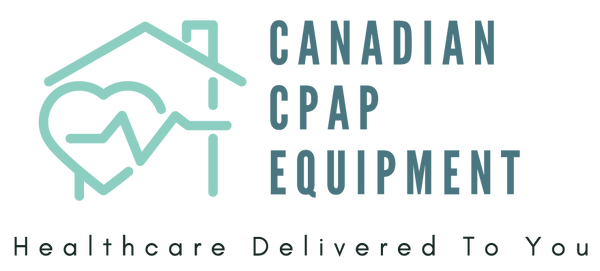When discussing sleep apnea, most people are familiar with the term Obstructive Sleep Apnea (OSA), characterized by loud snoring and pauses in breathing due to a blocked airway. However, there's another, less common but equally important form of the condition: Central Sleep Apnea (CSA). While both lead to fragmented sleep and oxygen deprivation, their underlying causes and treatment approaches differ significantly. Understanding these distinctions is crucial for accurate diagnosis and effective management.
Obstructive Sleep Apnea (OSA): The Airway Collapse
OSA is by far the most prevalent type of sleep apnea, accounting for approximately 85-90% of all cases. It occurs when the muscles in the back of your throat relax too much during sleep, causing the soft tissues (like the tongue, soft palate, and uvula) to collapse and block your upper airway. This physical obstruction prevents air from reaching your lungs, even though your brain and respiratory muscles are still trying to breathe.
Key Characteristics of OSA:
-
Cause: Physical blockage or collapse of the upper airway.
-
Breathing Effort: Your body tries to breathe, but air cannot pass through the obstructed airway. You might see chest and abdominal movements indicating effort.
-
Symptoms: Loud, habitual snoring (often with gasps or choking sounds), excessive daytime sleepiness, morning headaches, restless sleep, and frequent awakenings.
-
Risk Factors: Obesity, larger neck circumference, anatomical abnormalities (e.g., small jaw, enlarged tonsils), male gender, older age, family history, and alcohol/sedative use.
-
Diagnosis: Primarily diagnosed through a sleep study (polysomnography or at-home sleep apnea test) that measures airflow, breathing effort, oxygen levels, and sleep stages.
- Treatment: Continuous Positive Airway Pressure (CPAP) therapy is the primary treatment. Other options include oral appliances, lifestyle modifications, and in some cases, surgery.
Central Sleep Apnea (CSA): The Brain's Communication Breakdown
CSA is less common than OSA and arises from a different mechanism. In CSA, the problem lies with the brain. The brain temporarily fails to send the correct signals to the muscles that control breathing. This means there is no effort to breathe at all for a short period, leading to a pause in respiration.
Key Characteristics of CSA:
-
Cause: A problem with the brain's respiratory control center; the brain doesn't signal the muscles to breathe.
-
Breathing Effort: There is no effort to breathe during an apneic event. The chest and abdomen remain still.
-
Symptoms: While daytime sleepiness can occur, snoring is often absent or very subtle. Patients might report frequent awakenings, shortness of breath upon waking, or difficulty falling/staying asleep. The pauses in breathing are often noticed by a bed partner.
-
Risk Factors: Heart failure, stroke, kidney failure, opioid use, high altitude, and certain neurological conditions. It can also be caused by medical treatments, such as CPAP therapy for OSA (known as treatment-emergent central sleep apnea or complex sleep apnea).
-
Diagnosis: Requires a comprehensive sleep study (polysomnography) that can differentiate between obstructive and central events by monitoring breathing effort.
- Treatment: Treatment focuses on addressing the underlying medical condition. This might include optimizing heart failure treatment, adjusting medications, or using specialized breathing devices like Adaptive Servo-Ventilation (ASV) or Bi-level Positive Airway Pressure (BiPAP).
Complex Sleep Apnea Syndrome (Treatment-Emergent Central Sleep Apnea)
This is a hybrid form where an individual initially presents with OSA, but then develops CSA during treatment with CPAP. It is believed that in some individuals, the continuous positive airway pressure unmasks an underlying instability in the brain's respiratory control. In many cases, the CSA resolves on its own with continued CPAP use, but sometimes requires different therapy, such as ASV.
Key Differences at a Glance
|
Feature |
Obstructive Sleep Apnea (OSA) |
Central Sleep Apnea (CSA) |
|---|---|---|
|
Cause |
Physical blockage of airway |
Brain fails to signal breathing |
|
Breathing Effort |
Present, but ineffective |
Absent |
|
Snoring |
Common, often loud |
Rare or subtle |
|
Gasping/Choking |
Common |
Less common |
|
Primary Treatment |
CPAP, oral appliances, surgery |
Treat underlying condition, ASV/BiPAP |
Why the Distinction Matters
Accurately differentiating between OSA and CSA is crucial because the treatment approaches are different. Treating CSA with standard CPAP (which is designed to overcome physical obstruction) may not be effective and can sometimes even worsen the condition if it's treatment-emergent CSA. A proper diagnosis by a sleep specialist, often through a comprehensive sleep study, ensures that you receive the most appropriate and effective therapy for your specific type of sleep apnea.
If you suspect you have sleep apnea, it's important to get tested. While at-home tests are excellent for diagnosing OSA, a sleep specialist can determine if a more comprehensive in-lab study is needed to rule out or diagnose CSA.
Next Steps: The health implications of sleep apnea are far-reaching. In our next post, we discuss how sleep apnea can impact your heart and cardiovascular health. Read the full article here

